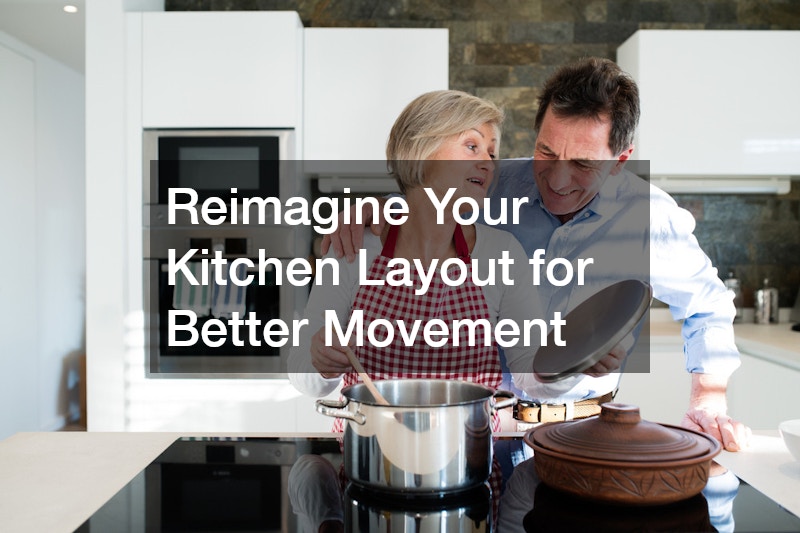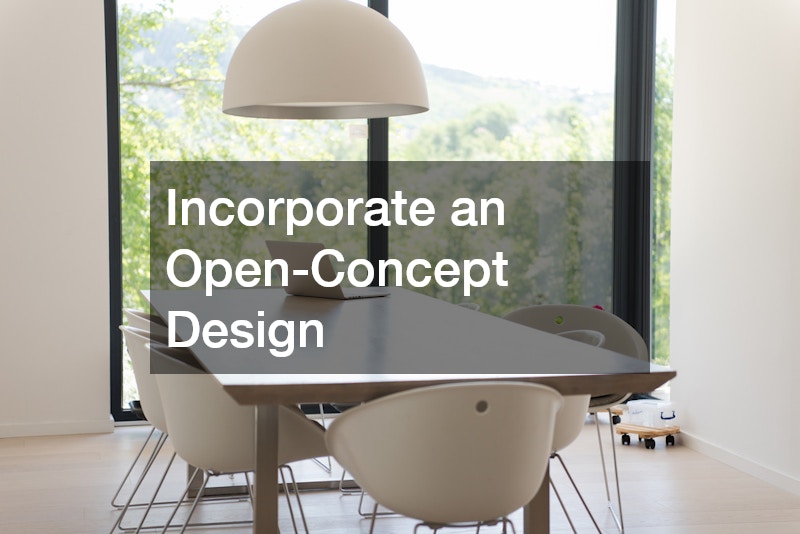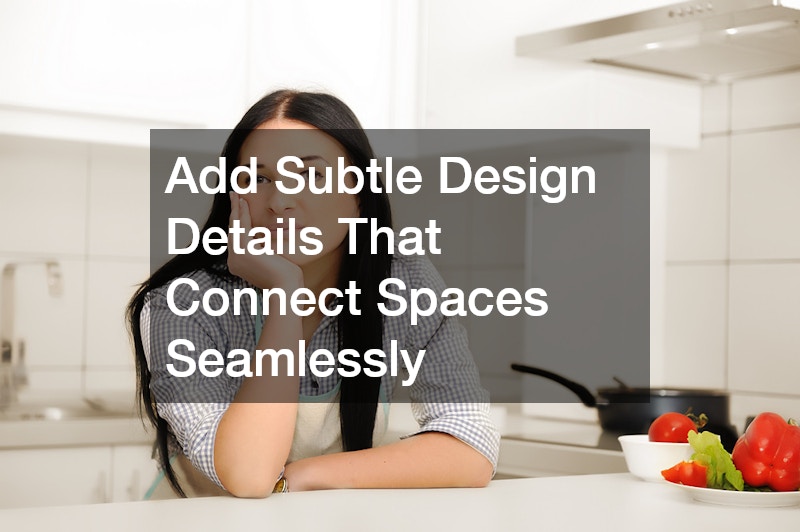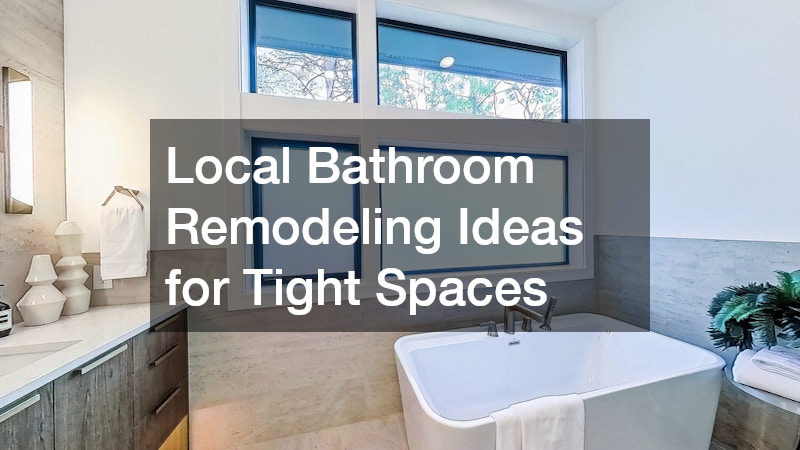A modern kitchen isn’t just about sleek finishes and high-end appliances—it’s about how seamlessly everything works together. A well-designed kitchen should allow you to move freely, access essentials easily, and enjoy both cooking and socializing. If your kitchen feels cramped or disconnected, it may be time to remodel with flow in mind. Here are 12 remodeling tips to help you create a kitchen that’s both beautiful and effortlessly functional with the help of a remodeling service.

1. Reimagine Your Kitchen Layout for Better Movement
The layout is the foundation of good kitchen flow. Start by evaluating how you currently use the space with the help of a local remodeling service and identify any traffic bottlenecks. Common layouts like L-shaped, U-shaped, and galley kitchens each offer unique advantages depending on your home’s footprint. If your kitchen feels crowded, consider opening walls to create a more open layout.
A remodel is the perfect opportunity to rethink how you navigate your kitchen. Ensure that key areas such as the stove, sink, and refrigerator are easily accessible without obstruction. Maintain clear pathways of at least 42 inches between countertops to allow smooth movement, even when multiple people are in the kitchen.
By prioritizing movement patterns during your remodel, you can create a space that feels larger, more efficient, and enjoyable to use every day—transforming your kitchen into the heart of the home.
2. Create Distinct Zones for Cooking, Cleaning, and Prep Work
A modern kitchen should function like a well-organized workstation. Dividing the space into distinct zones helps eliminate clutter and confusion. Establish clear areas for cooking, prepping, cleaning, and serving to improve efficiency and flow.
For example, position the prep area near the refrigerator and pantry so you can easily grab ingredients. The cooking zone should include your range or cooktop, oven, and essential utensils, while the cleaning zone centers around your sink and dishwasher. Each zone should have its own counter space and storage options. Luckily, a quartzite countertop installer can help!
This kind of zoning makes your kitchen more intuitive—every item has a purpose and a logical location. It also allows multiple people to work together without bumping into each other. If you enjoy entertaining, a separate serving or beverage area can further enhance traffic flow and social interaction.
By planning zones during your remodel, you’ll eliminate unnecessary steps and create a kitchen that moves with you, not against you.
3. Optimize Your Kitchen Triangle for Efficiency
The “kitchen work triangle” is one of the most fundamental design principles in kitchen planning. It connects the three main work areas—sink, stove, and refrigerator—forming an imaginary triangle that promotes smooth workflow.
To optimize your triangle, make sure each side measures between 4 and 9 feet, with a total perimeter of 13 to 26 feet. This ensures you can move comfortably between tasks without too much walking or crowding. Avoid placing obstacles like kitchen islands or tall cabinets inside the triangle, as they can interrupt your movement.
Even in open layouts, the work triangle still matters. Modern kitchens may integrate additional zones, like a coffee station or baking corner, but the core triangle remains key for efficiency. During your remodel, test different configurations with tape outlines or digital mockups to visualize how each setup feels in real life.
An optimized triangle keeps your workflow smooth, saves time, and makes everyday cooking more enjoyable.

4. Incorporate an Open-Concept Design
Open-concept kitchens continue to dominate modern design because they create seamless transitions between cooking, dining, and living spaces. Removing walls or widening doorways helps the kitchen feel larger, brighter, and more welcoming.
If your current kitchen feels isolated, an open remodel can dramatically improve both flow and functionality. By connecting the kitchen with adjacent spaces, you encourage natural movement and social interaction. Family members can chat, dine, or relax nearby while you cook, creating a more inclusive atmosphere.
Be mindful of balancing openness with structure. Use design elements such as islands, half-walls, or changes in flooring to subtly define zones without closing them off. Proper ventilation is also crucial in open layouts—choose a powerful range hood to prevent cooking odors from spreading.
The result is a kitchen that feels integrated into the home, not tucked away. You’ll enjoy better visibility, communication, and connection with others, turning your kitchen into a true gathering space.
5. Use Smart Storage Solutions to Reduce Clutter
Clutter is the enemy of flow. Even the most beautifully designed kitchen can feel chaotic if countertops are constantly crowded. Incorporating smart storage solutions during your remodel is key to keeping everything organized and accessible.
Consider deep drawers for pots and pans, pull-out shelves for spices, and vertical dividers for baking sheets. Hidden storage within kitchen islands or under seating benches can make use of every inch of space. New kitchen cabinets designed for your exact needs will make the biggest difference.
Also, think vertically. Use the full height of your walls with upper cabinets or open shelving, but balance aesthetics by leaving some negative space to maintain an airy feel. Built-in trash and recycling bins help keep surfaces clean and free of clutter.
When everything has a place, your workflow becomes seamless. You’ll spend less time searching and more time enjoying your kitchen. The result is a space that feels open, efficient, and visually calming.
6. Choose the Right Island Size and Placement
A kitchen island can be a game-changer—or a flow disruptor—depending on how it’s designed. The right island enhances both functionality and aesthetics; the wrong one makes movement awkward.
When planning your island, ensure there’s enough clearance on all sides—ideally 42 to 48 inches—to move around comfortably. The size of your island should be proportional to your kitchen’s footprint; too large and it feels cramped, too small and it loses usefulness.
Think carefully about the island’s purpose. Will it serve as a prep area, dining space, or storage hub? Incorporating a sink or cooktop can boost efficiency, but keep in mind how it affects your work triangle. You can also add seating for casual meals or socializing, which keeps guests near but out of the cooking zone.
An island designed with flow in mind will enhance every activity in your kitchen, from weekday breakfasts to holiday gatherings.

7. Upgrade to Streamlined Appliances That Complement Flow
Appliances are more than just tools—they shape how you interact with your kitchen. Upgrading to modern, space-conscious appliances with the assistance of a plumbing contractor can significantly improve flow.
Look for built-in or counter-depth models that align with your cabinetry to create a smooth visual line. Consider appliance garages or integrated panels to hide bulky machines when not in use. Compact dishwashers, drawer-style microwaves, and induction cooktops can free up counter and cabinet space.
Placement is equally important. Keep your dishwasher near the sink, the microwave near your prep area, and the refrigerator at the edge of the cooking zone to minimize traffic. Smart appliances with voice control or app connectivity can also make multitasking more convenient.
A cohesive set of sleek, well-placed appliances enhances the aesthetic and makes your kitchen feel effortless to navigate. Function follows form, creating a truly modern experience.
8. Enhance Lighting to Define and Brighten Work Areas
Good lighting transforms not only how your kitchen looks but how it functions. A thoughtful lighting plan improves visibility, defines zones, and contributes to overall flow.
Start with three layers: ambient, task, and accent lighting. Ambient lighting installed by an electrician provides general illumination through recessed or ceiling fixtures. Task lighting focuses on work areas like countertops, sinks, and stoves—under-cabinet LEDs are ideal for this. Accent lighting, such as pendant lights or wall sconces, adds depth and style.
Proper lighting ensures that every zone in your kitchen has purpose and clarity. It helps reduce eye strain, prevents shadows, and makes it easier to move between areas safely.
When remodeling, consider dimmer switches and adjustable fixtures to create flexible atmospheres—from bright and energetic during cooking to soft and inviting for dining. With balanced lighting, your kitchen will feel spacious, functional, and beautifully unified. Consider replacement windows for enhanced natural lighting, too!
9. Select Minimalist Materials and Finishes for a Cohesive Look
Visual clutter can interrupt flow just as much as physical clutter. Choosing minimalist materials and finishes creates a sense of calm and continuity that supports natural movement.
Stick to a cohesive color palette—neutral tones like white, gray, and soft wood finishes work well in modern kitchens. Opt for matte surfaces to reduce glare and sleek cabinetry from a kitchen cabinet manufacturer without ornate details. Integrated handles or push-to-open mechanisms maintain clean lines.
For countertops, quartz, concrete, and solid surfaces provide durability with understated elegance. Pair these with simple backsplash designs that complement rather than compete.
Consistency across textures and colors helps your eye move easily throughout the space, making it feel open and harmonious. The more seamless your finishes, the more your kitchen will embody the effortless flow that defines modern design.

10. Add Subtle Design Details That Connect Spaces Seamlessly
Finally, it’s the small details that tie everything together. Subtle design elements can enhance the feeling of flow and connection throughout your home.
Use matching flooring materials between the kitchen and adjoining rooms to create visual continuity. Incorporate repeating accents—such as hardware finishes or lighting fixtures—that carry a consistent theme. If your kitchen opens to a dining or living area, consider using coordinated paint tones or trim styles to maintain cohesion.
Even architectural details like archways, ceiling beams, or open shelving can create a sense of connection. Thoughtful transitions between materials—like a waterfall island edge or flush cabinet alignment—contribute to that seamless, uninterrupted look.
11. Incorporate Flexible Seating to Enhance Flow
A modern kitchen isn’t just about cooking—it’s a space for gathering, working, and socializing. Flexible seating options help maintain smooth traffic while allowing the kitchen to serve multiple purposes. Consider bar stools at an island, a built-in bench with storage, or movable chairs that can be repositioned as needed.
Seating placement is key. Avoid blocking main pathways or the work triangle. Stools tucked under the island or a slim breakfast bar ensures that people can sit comfortably without interrupting kitchen activities. Built-in benches along walls can double as storage, keeping clutter off counters while providing cozy spots for family and guests.
For open-concept ideas, flexible seating by a kitchen designer encourages natural movement between kitchen, dining, and living areas. It allows for informal meals, casual conversations, and work-from-home setups without overcrowding the space. Adjustable or lightweight chairs make it easy to reconfigure the space for larger gatherings or smaller, intimate moments.
Incorporating flexible seating is a subtle but powerful way to improve flow. It keeps people comfortable, promotes social interaction, and ensures the kitchen functions smoothly as both a cooking and living space.
12. Use Flooring to Guide Movement
Flooring choices can influence both the look and functionality of your kitchen. Beyond aesthetics, the right option from a local flooring store can subtly guide movement and improve flow. Continuous flooring between the kitchen and adjacent spaces encourages a seamless transition, making the area feel larger and more cohesive.
Durable, easy-to-clean materials like hardwood, tile, or luxury vinyl plank are ideal. They withstand heavy traffic while maintaining visual appeal. Pattern and texture can also be used strategically. For example, elongated floor planks or linear tile patterns can create a natural directional flow, subtly guiding people through the space.
Consider underfloor heating or non-slip finishes for added comfort and safety. Consistency in material and color palette across zones supports a sense of unity, while small changes—like contrasting borders near the kitchen island—can help define work areas without breaking visual flow.
By planning your flooring as part of your remodel, you create a foundation that complements traffic patterns, enhances comfort, and ties the kitchen together with surrounding rooms. Thoughtful flooring design reinforces natural movement and contributes to a kitchen that feels effortless to navigate.
These finishing touches may seem small, but they complete the overall sense of balance and movement in your kitchen. A well-flowing modern kitchen isn’t just functional—it’s a space that feels naturally inviting, unified, and designed for the way you live today.



